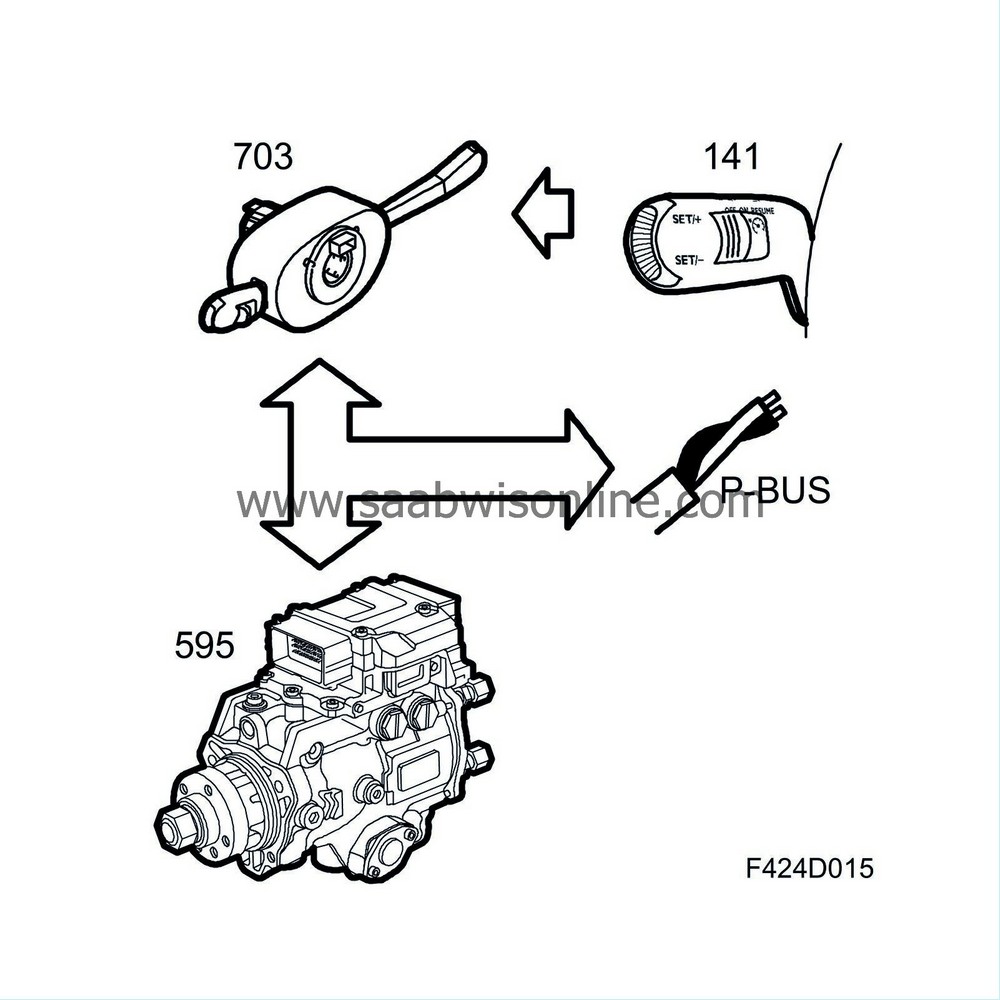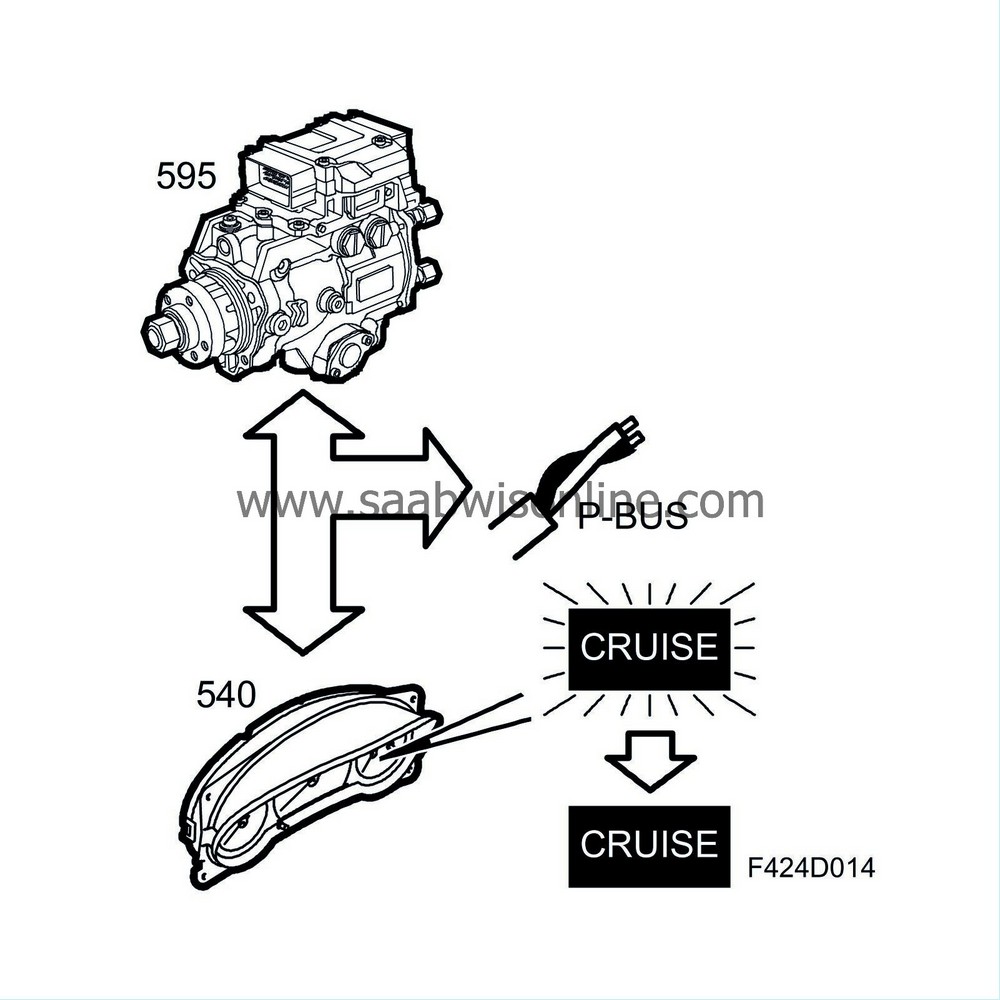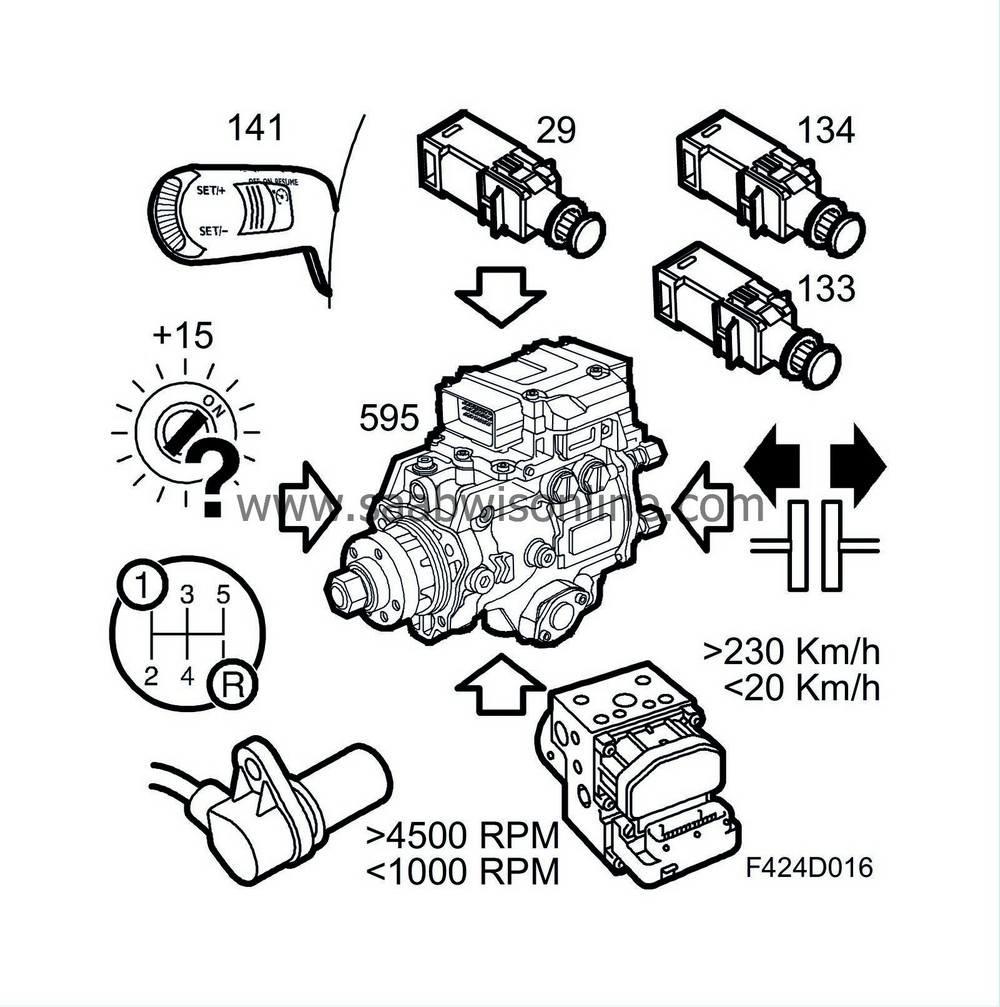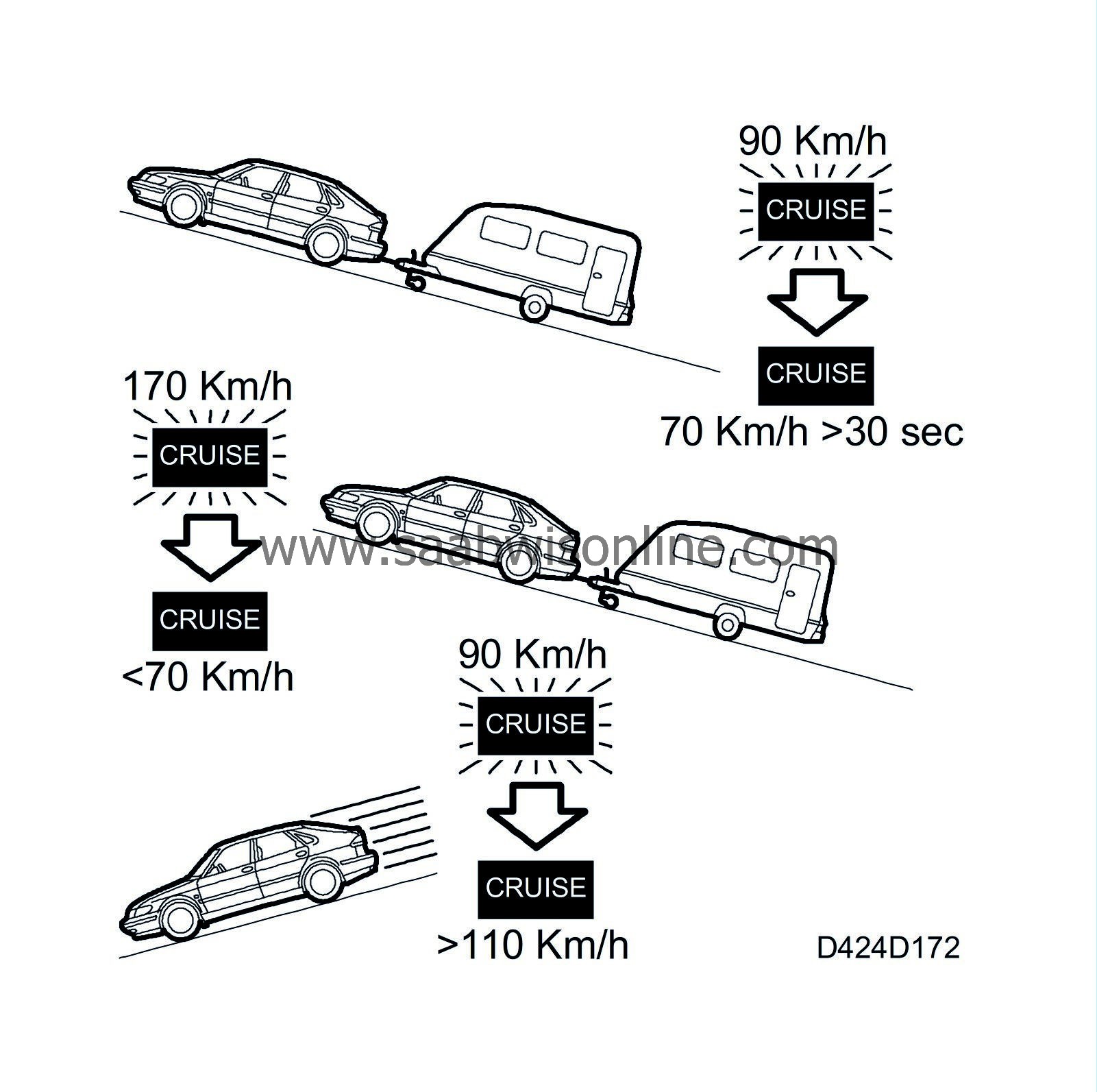Detailed description, cruise control
|
|
Detailed description, cruise control
|
The cruise control function is completely integrated in the engine control module and is operated with a switch on the direction indicator stalk switch. The control module processes the position of the switch, the vehicle speed and the gear ratio between the engine and the drive wheels. The result of these calculations is converted into a requested fuel quantity, which is carried forward in the control module's decision process.
The switch is part of the CIM. The switch position is converted by the CIM to a bus message that is received by the ECM.

When the switch is put in the ON position, the control module sends bus information "cruise lamp ON". The main instrument unit then turns on the CRUISE lamp.
Cruise control comprises four sub-functions:

|
-
|
Evaluation of the cruise control switch
|
|
-
|
Cruise control functions
|
|
Evaluation of the cruise control switch
|
This function analyses the digital information from the switch, which the driver operates to obtain the desired function from the cruise control.
When evaluating the position of the switch, a plausibility assessment is made of the switch. This is performed by only allowing approved combinations of on and off for the different switch positions. If a disallowed combination of on/off occurs, a cruise control fault is generated and cruise control is disengaged.
Activation
Cruise control cannot be engaged if
|
-
|
The vehicle speed exceeds 220 km/h
|
|
-
|
The vehicle speed is below 25 km/h
|
The shut-off conditions sub-function monitors a number of different parameters to determine if cruise control is to be allowed to continue. If any of the following conditions are met, cruise control will be disengaged.

|
-
|
OFF position from cruise control switch.
|
|
-
|
Logic error in brake switches.
|
|
-
|
The clutch is depressed or there is a fault in the cruise control clutch switch.
|
|
-
|
Cruise control fault determined by control module.
|
|
-
|
The vehicle speed exceeds 230 km/h.
|
|
-
|
The vehicle speed is below 20 km/h.
|
|
-
|
The engine speed is above 4500 rpm.
|
|
-
|
The engine speed is below 1000 rpm.
|
|
-
|
The ratio between the current vehicle speed and engine speed is lower than 13.8 km/h/1000 rpm, i.e. first gear.
|
|
-
|
The ratio between the current vehicle speed and engine speed and the ratio between the vehicle speed and engine speed when cruise control is active is greater than 31.25 km/h/1000 rpm. This means that if the clutch switch has not disengaged cruise control but the gear ratio has still changed, it is assumed that the clutch switch is defective.
|
If cruise control is in the "retain set speed" position and the accelerator is not touched, cruise control will also be disengaged if the following conditions are met.

|
-
|
If the current vehicle speed falls below the cruise control speed setting by more than 20 km/h for more than 30 seconds.
|
|
-
|
If the current vehicle speed falls below the cruise control speed setting by more than 100 km/h.
|
|
-
|
If the current vehicle speed exceeds the cruise control speed setting by more than 20 km/h.
|
The gear position identification sub-function identifies the current gear position. By comparing the engine speed with the current vehicle speed, the gear position can be identified.
|
Note
|
|
For safety reasons (brake system function) the driver must apply the brakes once once the engine is running before the system can be activated.
|
|
The follow message is displayed on the SID:
Tap brakes lightly before using cruise control
|
The system has the following functions:
|
-
|
SET/+
: sets speed and increases set speed
|
|
-
|
SET/-
: sets speed and decreases set speed
|
|
-
|
RESUME
: re-engages set speed
|
The CRUISE indicator light in the main instrument panel comes on when the switch is slid to ON. If you switch off the engine while the cruise control is ON, the system will be ON the next time the engine is started.
To set the speed
|
1.
|
Slide the switch to ON.
|
|
2.
|
Jog the control to SET/+ or SET/- when the car has reached the desired speed (above 25 km/h).
|
To increase the set speed
You can increase the speed in any of the following ways:
|
-
|
Accelerate to the desired speed. Jog the control to SET/+ or SET/-.
|
|
-
|
Jog the control to SET/+ to increase the speed by 1 mph (1.6 mph) (when cruise control already engaged).
|
|
-
|
Hold the control in the SET/+ position until the desired speed is reached (when cruise control already engaged).
|
To reduce the set speed
You can reduce speed in any of the following ways:
|
-
|
Brake to the desired speed. Jog the control to SET/+ or SET/-.
|
|
-
|
Jog the control to SET/- to reduce the speed by 1 mph (1.6 km/h).
|
|
-
|
Hold the control in the SET/- position until the desired speed is reached.
|
Temporary increase in speed
Accelerate, without shifting down (manual gearbox), to exceed the set speed such as for overtaking. When you release the accelerator, the car will return to the set speed.
To disengage the system temporarily
Slide the switch to the left towards OFF, but only as far as to disengage the cruise control. Allow the switch to spring back.
To re-engage the system
Slide the switch to RESUME. The car will return to the previously set speed. Vehicle speed must exceed 40 km/h for petrol-engined cars and 25 km/h for diesel-engined cars .
To disengage the system
The system will be disengaged:
|
-
|
As soon as the brake pedal or clutch pedal (cars with manual gearbox) is depressed.
|
|
-
|
When the switch is slid to disengage position.
|
|
-
|
When the switch is slid to OFF.
|
|
-
|
When the TCS/ESP system is operative.
|
|
-
|
When position N is selected (cars with automatic transmission).
|






